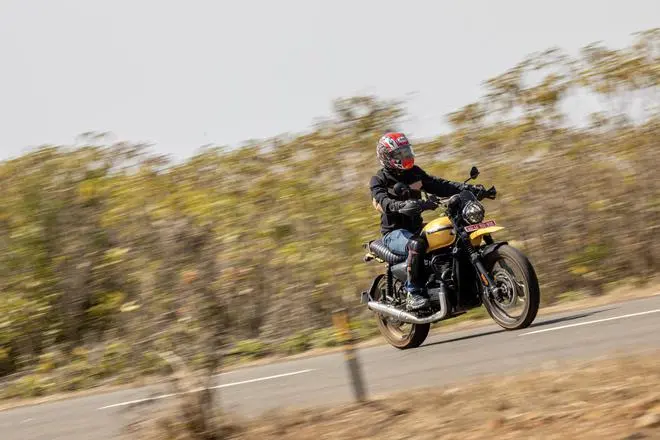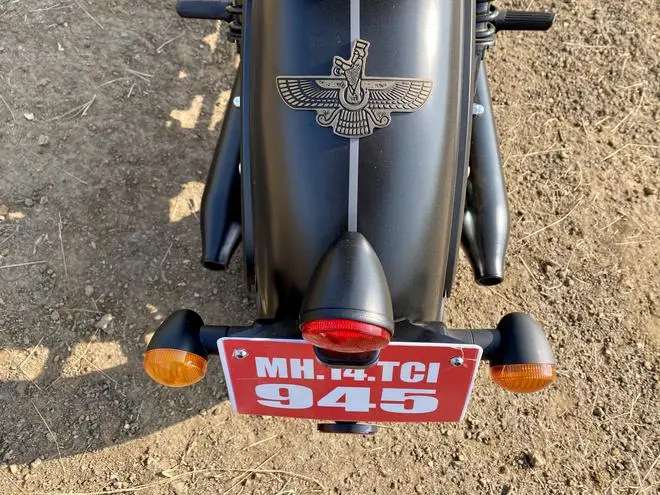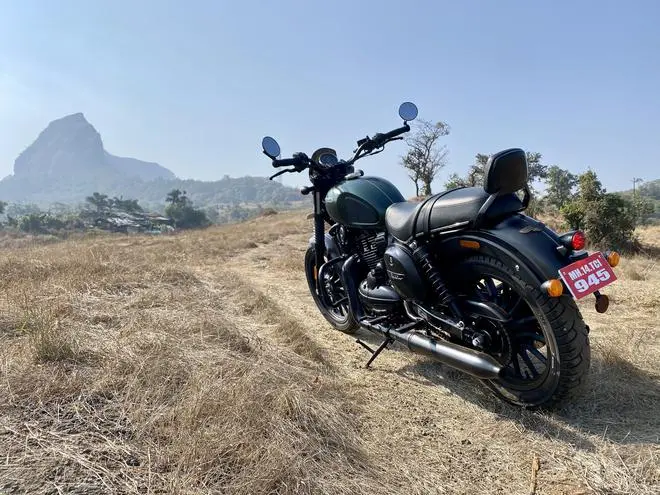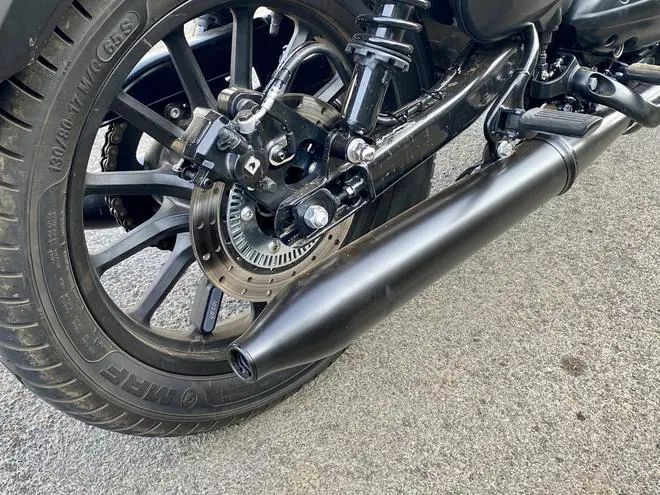Classic Legends has revived the legendary Jawa and Yezdi motorcycle brands. Gen X’s wheels of choice, these brands were more than mere motorcycles used for commuting. Often, a lifetime of memories was born on their poorly contoured seats. After the return of Jawa in 2018, it was Yezdi’s turn to make a comeback and offer zoomers more choice in the lifestyle motorcycle category.
The trio of Yezdis that have been launched look good in pictures. But do they deliver the visceral, addictive riding experience of the original Yezdi Roadking? Before we get to the bottom-line, let me attempt to place the new bikes in their context.

Rebirth, Revival, Return, Reinterpret — each of those terms potentially brings with it a different flavour. First off, the new Yedzis don’t quite fit the term Rebirth. Return, yes, but not really Rebirth, because the latter could mean that nothing has changed. So, what is it then? I’d say that the Yezdi has Returned, the brand has been Revived, and the bikes have been Reinterpreted.
The new Yezdi Roadster, Yezdi Scrambler and Yezdi Adventure don’t mimic the original; they are just inspired by it. Not even the logo has been carried forward. These are now bikes powered by 4-stroke units versus the original’s 2-stroke. Certainly, they are not going to sound the same. So, if you are planning to check them out at the nearest dealership and are expecting clones of the original, you will be disappointed.
Build and features
After a delay of nearly a month, I got to test ride the Yezdi trio last week. One of the first impressions I got was that there are quite a few elements that refer back to the new Jawas, which can be a positive. There is no dearth of character, though each new Yezdi does get strong design cues to identify their purpose-built positioning.

The off-road focused Adventure gets the longest wheelbase (1,465 mm), high-set handle bar and taller saddle height. In keeping with its compact agile dripping-with-adrenaline go-anywhere character, the Scrambler gets the shortest wheelbase (1,403 mm), the classic round fuel tank, off-centre pod-type speedo, hybrid tyres and the trademark front fender beak. The Roadster, which is closest to the original Yezdi design, is a classic laid-back cruiser in its positioning. The bar-end mirrors, the contoured saddle, the side panels and engine cases make the Roadster’s design seem like a mix of Yezdi and Jawa elements with a touch of both classic retro and modern tastes. The low dual exhaust captures the Yezdi spirit, though it just doesn’t (and frankly can’t) sound like the original. A range of optional accessories including panniers and knuckle-guards have also been created to ensure that a lot of personalisation will be possible.

Attention to detail in the way some of the design elements have been executed is good. I liked the new winged-Y logo, but some of the other Parsi references may be lost on many buyers.
All three bikes feature dual-cradle chassis, with the Adventure’s modifications, mounting points and chassis-mounted front cage differentiating it the most from the other two; they are also why it looks a bit like the Royal Enfield Himalayan. The three bikes get their own suspension set-ups to deliver unique performance characteristics. For example, the telescopic front forks are set up differently to offer varying levels of wheel travel — Roadster at 135 mm, Scrambler at 150 mm and Adventure at 200 mm. The off-roading abilities of the Adventure also get a leg-up from the mono shock-absorber with pre-load adjust at the rear enabling 180 mm of rear wheel travel. The Scrambler and the Roadster get twin-shock absorbers at the rear, with the former getting allowance for more wheel travel. Both these bikes’ rear suspension also provides for preload adjustment. All the Yezdis are relatively heavy bikes, tipping the scales at about 180 kg-plus. But on the go, the weight is hardly felt; foot-peg scrapping fast corners are very doable. Ground clearance is adequate for most riding conditions, the highest being the Adventure’s 220 mm and the lowest the Roadster’s 175 mm. I found the fuel tanks and their knee recesses to be a perfect fit. The foot pegs though, were just a bit tall and rear set; not inconvenient for me, but could be for taller riders.

I rode all three bikes on regular tarmac and some off-road track riding. The seating position and rider ergonomics is good in all three. The 815 mm saddle height in the Adventure was bit more than I’d have liked. And the only part of the Roadster that you may need to tweak would be the bar-end mirrors which tended to snag with my gloves. All three Yezdis use a circular single-pod speedometer with some warning lights within; but the instrument set up has also been customised for each of them with the pod being fitted into a more elaborate rectangular display to allow turn-by-turn navigation in the Adventure.
Performance
The choice of engine for the Yezdis continues to be the same single-cylinder, 334 cc motor from the new Jawas. This engine with the same bore and stroke of 81mm x 65mm, produces different output and torque levels for the three new Yezdis. The idea is obviously to give each new bike a distinctive character. But company officials claim that the engine has gone through extensive upgrades and modifications to improve and deliver a better performance in the Yezdi.

Some of the engine upgrades include an updated crank shaft and connecting rod, and some minor modifications to the piston and balancer. There have also been some changes to the valvetrain and cylinder-head. The port has been optimised for heat flow management. It gets an assist and slipper clutch, improved gear train for reduced vibration and harshness and better durability, and a new 38 mm throttle body for all three Yezdis. Some valvetrain changes have also been made to reduce or eliminate tappet noise. The radiator has seen some changes, giving it a claimed 50 per cent increase in heat rejection capacity, and so the engine runs cooler, according to Yezdi officials.

The engine output levels and the way that it is delivered to the rear wheel is different with each Yezdi. In the Adventure, the engine delivers 30.2 PS of max power and 29.9 Nm of peak torque; in the Scrambler it is 29.1 PS and 28.2 Nm; and in the Roadster, 29.7 PS and 29 Nm. All three get 6-speed gearboxes that pair quite well and add to the character of the bike. There was the one-odd occurrence of false neutrals and the occasional engine stall, which I was told was a specific problem with my test unit. The Roadster gets the classic Yezdi low-slung twin exhaust with tapering ends. The Scrambler also gets a twin exhaust, but the Adventure gets a single side exhaust turned upwards for a more off-road focused set up. To add to the persona of each bike, the exhaust note has been tuned to deliver a unique sound. Braking performance is good with all three versions of the Yezdi, featuring a 320 mm disc at the front and a 240 mm disc at the rear. All of them get floating calipers and a dual channel ABS, but the Adventure and the Scrambler get three switchable ABS modes to choose from — Road, Rain and Off-road.
Bottom-line
The new Yezdis are worthy competitors in the retro lifestyle category. The fit and finish, quality of switchgear, and other materials used are all as good as it gets in the segment. There are very few raw bits on the bike that catch the eye. It is also a good idea to have launched the three bikes in mostly fully-loaded form.

There is no skimping on features and a range of paint schemes to choose from. My guess is that the Roadster will be the most chosen of the three, though I think that the Scrambler is also full of good vibes (figuratively and literally).
The new Yezdis are inspired by and reinterpreted for a modern audience. If you want to own a piece of history, you will have to look out for a restored Yezdi Roadking of the 1980s or 90s.
Prices for the new Yezdis start from ₹1.98 lakh for the Roadster and go up to ₹2.19 lakh for the Adventure Camo.









Comments
Comments have to be in English, and in full sentences. They cannot be abusive or personal. Please abide by our community guidelines for posting your comments.
We have migrated to a new commenting platform. If you are already a registered user of TheHindu Businessline and logged in, you may continue to engage with our articles. If you do not have an account please register and login to post comments. Users can access their older comments by logging into their accounts on Vuukle.